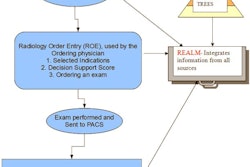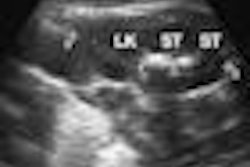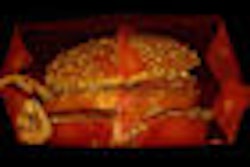According to recent research, CT procedure volume is spiking among both radiologists and physicians in other specialties. The increase has raised red flags for government and private insurance payors around the issue of self-referral. Yet there's another issue that has been less scrutinized: With CT utilization up, are users of the modality finding more pathology?
Not really, according to Dr. Pragya Dang from Massachusetts General Hospital (MGH) in Boston. Dang and colleagues conducted a study to determine if the growth of CT use in clinical practice has been accompanied by a change in diagnostic yield and corresponding patient management recommendations. Findings from the study were presented at the 2008 RSNA meeting in Chicago.
"Over the years, recommendation rates have increased for all radiology specialties, with maximum increase in chest and neuroradiology," the team wrote, "while finding rates decreased for all specialties except neuroradiology."
The researchers analyzed reports of all CT exams performed between 1996 and 2005 at MGH. They determined finding and recommendation rates in exam reports for the following:
- Different age groups
- Gender
- Single or multiregion exams
- Body regions scanned
- Number of CTs performed.
The researchers found the number of CT scans at MGH grew at a rate of 14% per year, outpacing a 0.5% increase in the recommendation rate. The rate of findings fell at a rate of 0.6% per year (see chart below).
|
Children (18 and younger) had lower findings (65.5%) and recommendation rates (1.2%) than adults, who had finding rates of 77.6% and recommendation rates of 18.3%.
Finding rates were higher in patients who had undergone three or more CT exams (80.8%), compared with those who had had one exam (72.9%), but there was a converse effect for recommendation rates (16.8% and 22.1%, respectively).
Highest finding rates were discovered in extremity and chest CT, and the highest recommendation rates were seen in chest (30.7%) and head (18.3%) CT.
"Over a 10-year period, CT exams performed at our center showed a rapid increase in volume and a small, yet significant, decrease in yield," Dang said.
Too many, too often?
In a related study, Dang and colleagues examined whether multiregion CT scans are being overused.
Dang's team assessed 632,409 CT exams performed in 198,783 patients between 1996 and 2005. A total of 32.1% of patients had less than one body region scanned per year, while 22.5% had two regions scanned and 9.6% of patients had three regions scanned. Children underwent multiregion scans less often than adults (20.9% versus 32.6%, respectively).
During the 10-year period, prevalence of two-region scans increased from 21.2% to 37.5%, and use of scans of three or more regions went from 5.3% to 11%. Who got the most multiregion scans? Young adults ages 19 to 40 years, of whom 33.1% had five or more of these types of exams.
"Knowledge of body areas and age groups involved in multiregion CT exams can help radiologists to devise targeted dose-reduction strategies for most commonly scanned age, gender, and body region," they wrote.
By Kate Madden Yee
AuntMinnie.com staff writer
March 3, 2009
Related Reading
CT utilization spikes among nonradiologists, December 17, 2008
CT important in emergency diagnosis of appendicitis, October 31, 2008
Studies address need to reduce CT dose in emergency settings, October 17, 2008
Cincinnati meeting starts long road to harmonizing CT dose displays, September 17, 2008
Study: Radiologists dial back on pediatric CT settings, September 4, 2008
Copyright © 2009 AuntMinnie.com



















